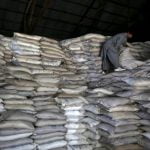 The Reserve Bank believes the Australian economy is picking up and that faster wage growth and higher interest rates won’t be too far behind.
The Reserve Bank believes the Australian economy is picking up and that faster wage growth and higher interest rates won’t be too far behind.
Speaking at a community dinner in Brisbane after the RBA voted to keep its cash rate on hold for the thirteenth successive month, governor Philip Lowe said the board had been patient and not sought to “overly engineer or fine tune” an economic recovery.
Interest rates unchanged
The Reserve Bank has kept interest rates on hold at 1.5%. Economics Editor at The Age Peter Martin explains why and when we might see some change.
In recent months employment had picked up, the unemployment rate had begun to fall and the investment outlook had brightened.
Even so, it would be “some time before we are at what could be considered full employment,” he said.
The latest official figures put wage growth at a record low 1.9 per cent.
Dr Lowe said while globalisation, competition from new technologies and economic uncertainty would continue to depress wages for “a while yet” he was optimistic enough not to see stagnant wage growth as a “permanent state of affairs”.
“It is likely that as our economy strengthens and the demand for labour picks up, growth in wages will pick up too,” Dr Lowe told the dinner. “The laws of supply and demand still work. Even at the moment, we see some evidence… that in those pockets where the demand for labour is strong, wages are increasing a bit more quickly than they have for some time.”
The RBA’s central scenario was that over time stronger wage growth would become more widespread.
Even after an eventual increase in the cash rate from 1.5 per cent to a “neutral” rate of around 3.5 per cent, interest rates would remain lower than they had been before the global financial crisis.
He predicted higher interest rates would cause more problems than back when household incomes were growing strongly.
“Borrowers haven’t been able to rely on rising incomes to reduce the real value of the debt repayments in the way they used to; debt-service ratios will stay higher for longer,” Dr Lowe said. “This is something that both lenders and borrowers need to take into account.”
Over the past four years, household borrowing had increased at an average rate of 6.5 per cent, while household income has increased at an average rate of just 3.5 per cent.
“Given this, the bank has worked closely with the Prudential Regulation Authority to ensure that lending practices remain sound. In some cases, loans were being made where the borrower had only the slimmest of spare income,” Dr Lowe said.
The remarks came ahead of the release of the Australian National Accounts on Wednesday which are expected to show the economy grew 0.7 to 0.9 per cent in the June quarter, a jump from 0.3 per cent from the previous three months.
Treasurer Scott Morrison told the Coalition party room the economy was fulfilling his budget promise of “better days ahead”.
Job advertisements had climbed 13.3 per cent in the past year and 240,000 thousand new jobs had been created, 80 per cent of them full-time. This was the strongest growth in full-time jobs since the data set was started in 1978.
Wages paid to employees, a measure driven by hours worked, climbed 1.2 per cent in the June quarter. The volume of retail trade also climbed by 1.2 per cent.
Business confidence was its highest since 2010, and the output of manufacturers was the highest in 15 years.
[“Source-smh”]




